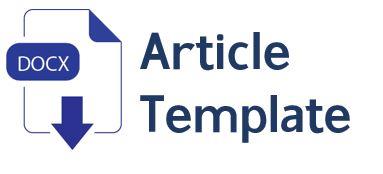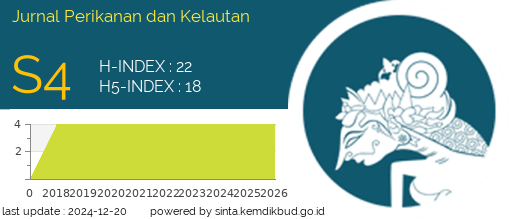Sustainable Tourism Development in Sungai Apit District Riau Province: Mangrove Ecotourism Factors
DOI:
https://doi.org/10.31258/Keywords:
Ecotourism, Conservation, Mangrove, Sustainable DevelopmentAbstract
One of the efforts to overcome the problem of environmental damage in the mangrove forest ecosystem is the management of mangrove ecotourism. The concept of mangrove ecotourism is a responsible trip to mangrove forest areas for mangrove forest conservation efforts and improving community welfare. This study aims to examine sustainable tourism development in Sungai Apit District Riau Province: mangrove ecotourism factors. The method used in this research is a survey method, which was determined at 4 (four) research locations, namely Mengkapan Village (Station I), Sungai Kayu Ara Village (Station II), Kayu Ara Permai Village (Station III) and Tanjung Kuras Village (Station IV). Each research station consists of three sampling points for measuring the quality of coastal waters. It is obtained an overview of environmental factors that support the growth of mangrove forests. Research activities have been carried out in April-November 2020. The results showed that the mangrove forest ecosystem in the Sungai Apit District Suitable (S2) to be developed as a mangrove ecotourism area with an average IKW value of Station I was 75.39%; Station II of 76.71%; Station III is 78.82% and Station IV is 76.32%. The potential and attractiveness of mangrove ecotourism in Sungai Apit District has been developed by the Siak Regency government. The strategy for developing mangrove ecotourism in Sungai Apit District based on SWOT analysis and interviews is to prioritize the W-O strategy which consists of: 1) Increasing the participation of stakeholders in the management of mangrove ecotourism; 2). Promote effective ecotourism promotion, information and market activities; 3) Improve coordination between stakeholders properly and 4) Improve the quality of human resources through training and education activities.
Downloads
References
Astuti, D., dan T. Widodo. 2018. Identifikasi potensi serta minat konsumen akan ekowisata mangrove di Pulau Bengkalis. Jurnal Inovasi dan Bisnis, 6: 135–141.
Febriansyah, F., D. Hartono., B.F. Negara, P.P. Renta, dan Y.P. Sari. 2018. Structure of mangrove community in Pulau Baii of Bengkulu City. Jurnal Enggano, 3(1): 112–128.
Iswahyudi, I., C. Kusmana, A. Hidayat, dan B.P. Noorachmat. 2019. Evaluasi kesesuaian lahan untuk rehabilitasi hutan mangrove Kota Langsa Aceh. Jurnal Matematika Sains dan Teknologi, 20(1): 45-56.
Joandani, G. K., R. Pribadi dan C.A. Suryono. 2019. Kajian potensi pengembangan ekowisata sebagai upaya konservasi mangrove di Desa Pasar Banggi, Kabupaten Rembang. Journal of Marine Research, 8(1): 117–126.
Katiandagho, B. 2015. Analisis struktur dan status ekosistem mangrove di perairan Timur Kabupaten Biak Numfor. Jurnal Ilmiah Agribisnis dan Perikanan,8(1): 8-12.
Mahyoaty. 2015. Pengembangan Ekowisata Mangrove di Resort Balanan Taman Nasional Baluran. IPB: Departemen Konservasi Sumberdaya Hutan dan Ekowisata.
Mughofar, A., M. Mohammad, dan S. Prabang. 2018. Zonasi dan komposisi vegetasi hutan mangrove Pantai Cengkrong Desa Karanggandu Kabupaten Trenggalek Provinsi Jawa Timur. Jurnal Pengelolaan Sumberdaya Alam dan Lingkungan, 8(1):77-85.
Murdiyarso, D., J. Purbopuspito, J.B. Kauffman, M. Warren, S. Sasmito, D. Donato, dan S. Kunianto. 2015. The potential of Indonesian mangrove forests for global climate change mitigation. Nature Climate Change, 5.
Nasir, M., Burhanuddin, dan I. Dewantara. 2019. Keanekaragaman jenis vegetasi penyusun hutan mangrove di Desa Medan Mas Kabupaten Kubu Raya. Jurnal Hutan Lestari, 7 (2): 973-982.
Novianty, F., A. Mulyadi dan Efriyeldi. 2017. Struktur Komunitas Hutan Mangrove Desa Mengkapan Kecamatan Sungai Apit Kabupaten Siak. JOM Faperika, 4(2), 1–13.
Rangkuti, F. 2018. Analisis SWOT: teknik membedah kasus bisnis cara perhitungan bobot, rating, dan OCAI. Cetakan Keduapuluh Empat. Jakarta: PT Gramedia Pustaka Utama.
Sahami, F. 2018. Penilaian kondisi mangrove berdasarkan tingkat kerapatan jenis. Jurnal Ilmiah Perikanan dan Kelautan, 6(2): 33-40.
Seliari, T., dan Ikaputra. 2021. Ekowisata: utopia dalam keberlanjutan. Jurnal Ilmiah Pariwsata, 26(2): 193-203.
Suyanto, E., F. Wardiyono, T. Wuryaningsih, dan T.R. Widyastuti. 2018. Model Kebijakan Pengelolaan Ekowisata Hutan Mangrove Kampung Laut Segara Anakan. Prosiding Seminar Nasional dan Call for Paper, November, 8–16.
Tablaseray, V.E., M.R.A. Pairin, N. Fakdawer, dan B. Hamuna. 2018. Pemetaan sebaran dan kerapatan mangrove di pesisir Timur Pulau Biak, Papua menggunakan citra satelit Landsat 8. Jurnal Perikanan dan Kelautan, 8(1): 81-89.
Tidore, S., C.F.A. Sondak, A.P. Rumengan, E.Y. Kaligis, E.L. Ginting, dan C. Kondoy. 2021. Struktur komunitas hutan mangrove di Desa Budo Kecamatan Wori Kabupaten Minahasa Utara. Jurnal Pesisir dan Laut Tropis, 9(2): 71-78.
Yoswaty, D. dan J. Samiaji. 2013. Buku Ajar Ekowisata Bahari. UR Press, Riau. 111 hlm.
Yulianda, F. 2019. Ekowisata perairan suatu konsep kesesuaian dan daya dukung wisata bahari dan wisata air tawar. Bogor: IPB Press.







